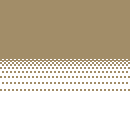IndianArt of the Northwest Coast
Back to Culture
Indian Art of the Northwest Coast has
roots that go back as far as 6000 years. Examples of basketry found in the Tlingit territory of Alaska
demonstrate design structure identical to baskets made in the 19th century. This reveals continuity in
tradition over an extremely long period of time and proves this art form to be one of the few prehistoric
primitive arts still thriving today. The relatively resent renaissance in Indian art of the Northwest
Coast has re-instilled a pride and rejuvenation of traditions that define a unique peoples. The artists
who work in the medium of Indian mask-making study the design principals related to their respective
tribal affiliation before innovating their own styles.
Northwest Coast Native Art has received
global recognition as one of the most powerful primitive arts alive today. The interest of collectors
in Germany, the UK, Asia and the US has created a strong demand. The high monetary value of Indian Art
enables the artists to make a good living at an occupation that, essentially, nourishes their culture.
It allows the stories and myths that define their peoples to be passed on to future generations.
The Potlatch is a ceremony in which
masks are used to interpret a series of songs, dances and rituals. It is in the context of the Potlatch
ceremony that the Kwakwakawakw give meaning to the purpose of their existence in the universe. It is
when they observe themselves in relation to the Sky World, the Undersea World, the Mortal World, and
the Spirit World. The Potlatch is the defining instrument of the great order of things, past and present
and yet to come. While the masks used exhibit powerful creative qualities of design, they also have practical
applications in their social lives and are, in a sense tools. The masks, which are so synonymous with
Northwest Coast Indian Art, are used to portray characters from Indian mythology. The dances they perform
in the potlatch are intricately choreographed and require a great deal of training on the part of the
participants. The theatrical element of the Potlatch ceremony is highly dramatic as songs and oration
carry the legends and mythologies to the future generations.
Northwest Coast Native Art has its
origins in everyday objects that were decorated with designs that made them more esthetically pleasing.
During the long winter months they had time to devote to their ceremonial life and to its material manifestations,
in painting, carving, and basket weaving. This is how Indian Art evolved. The red cedar, of the Northwest
Coast rain forest, with its straight soft grain, made possible the building of their large permanent
houses and the production of the great canoes, totem poles and house carvings, boxes and masks and other
materials of domestic and social life. Interestingly enough, there is no word for art or artist in the
Kwakwakawakw language. The Indian art designs incorporated into their wears had as much practical application
as the functionality of the items. For instance, the Lightning Snake has the head of a wolf; an animal
revered for it's hunting prowess. Knowing of its skill in striking whales, a whale hunter would paint
a Lightning Snake on his canoe, and then paint over the image. Although it was unseen by the whale, the
power of its presence on the canoe would aid the hunter to make a strike.
Back
to Culture - Indian Art
|

